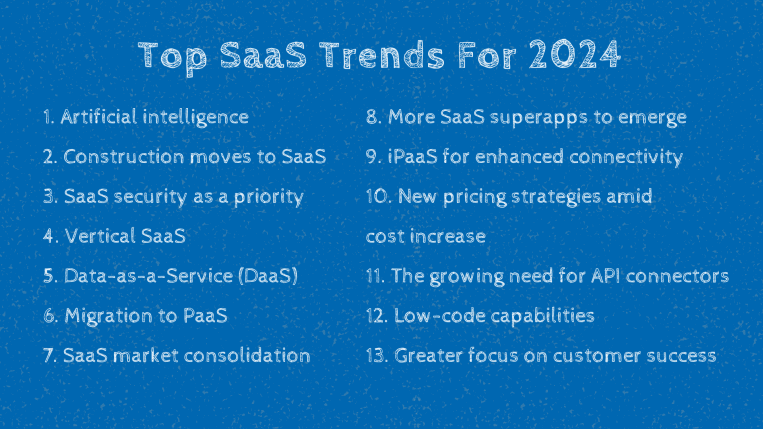In recent years, the B2B SaaS industry has experienced a remarkable transformation, largely driven by the integration of artificial intelligence (AI). As companies introduce advanced AI solutions, the need for sustainable pricing models becomes increasingly critical. The shift from traditional user licensing to more sophisticated pricing strategies presents unique challenges that must be addressed to ensure profitable growth in the tech industry.

The Future of SaaS
As an executive at a company that creates AI-enhanced business software, I am deeply involved in driving global go-to-market readiness. My role encompasses the critical tasks of increasing seller conversion and upselling AI solutions. Let’s delve into the SaaS pricing problem and explore potential solutions.
The Historical Context: User Licensing
Historically, the SaaS industry has relied heavily on user licensing as the primary pricing model. This approach, straightforward and easy to understand, involves charging customers based on the number of user licenses they require. It provides predictability in revenue streams and aligns costs with usage. However, as AI automates many manual tasks, the need for human users—and thus user licenses—diminishes. This shift inevitably impacts revenue generated from these licenses, compelling companies to rethink the traditional licensing model.
The AI Pricing Conundrum
Pricing AI components appropriately is crucial, given the substantial investment in research, data acquisition, and computational resources needed to develop and operate these systems. However, businesses often struggle to articulate the full value of their AI tools, making it challenging to charge premiums on top of conventional user licenses. Without an effective pricing strategy, the rise of AI could undermine traditional revenue streams.
Articulating the Value of AI
So, how do you articulate the value AI provides? Unlike traditional software, where benefits are often immediate and quantifiable, AI’s value can be more abstract and long-term. AI can streamline operations, reduce errors, and provide predictive insights, but quantifying these benefits in monetary terms is not straightforward. This ambiguity can lead to skepticism among potential customers who may struggle to justify the cost of AI solutions without clear, immediate proof points.
Moreover, AI’s benefits can vary significantly between users. For example, a sales team might see tremendous value in an AI tool that predicts customer behavior, while a marketing team might find it less beneficial. This variability makes it difficult to create a one-size-fits-all pricing model, necessitating more sophisticated approaches that can flexibly accommodate diverse use cases and perceived value.
The Path Forward: Creating Sustainable AI Pricing Models
To navigate these challenges, companies must create innovative pricing strategies. One potential approach is usage-based pricing, where clients are charged based on their actual consumption of AI resources. This model aligns costs with usage and ensures that clients only pay for the value they derive. However, it requires robust tracking and metering capabilities, adding to operational complexity.
Another approach is outcome-based pricing, where fees are tied to the business outcomes AI helps achieve. This model directly links cost to value, making it easier for clients to justify their investment. However, it requires clear metrics, data transparency between the vendor and the customer, and agreements on how outcomes are measured, which can be challenging to establish.
Hybrid models that combine elements of traditional licensing, usage-based, and outcome-based pricing could offer a balanced solution. These models can provide the predictability and simplicity of licensing, the fairness of usage-based pricing, and the value alignment of outcome-based pricing.
Determining the Right Pricing Model
To determine which pricing model might be best for your business, consider the following factors:
- Value perception: How do your customers perceive the value of your AI solutions? Are the benefits immediate and quantifiable, or more abstract and long-term?
- Usage patterns: How do your customers use your AI tools? Is there significant variability in how different customer segments use them?
- Business outcomes: Can you clearly define and measure the business outcomes that your AI solutions drive?
- Operational capabilities: Do you have the infrastructure in place to support usage-based or outcome-based pricing models?
If you’re ready to test a hybrid pricing model, start by assessing your current pricing structure and identifying areas where AI adds significant value. Engage with customers through surveys and interviews to gauge their perception and willingness to pay. Develop clear metrics to measure outcomes and usage. Launch pilot programs to test and refine your model, and then iterate based on feedback and scale it across your customer base.
Stay attuned to industry trends to ensure your approach remains competitive and relevant.
As the B2B SaaS industry continues to evolve, developing sustainable AI pricing models is crucial for maintaining profitable growth. The shift from user licensing to more nuanced, value-based approaches is essential to reflect AI’s true value and ensure its widespread adoption. By innovating and developing pricing strategies that align with the dynamic nature of AI, companies can help foster a new era of growth and technological advancement.

